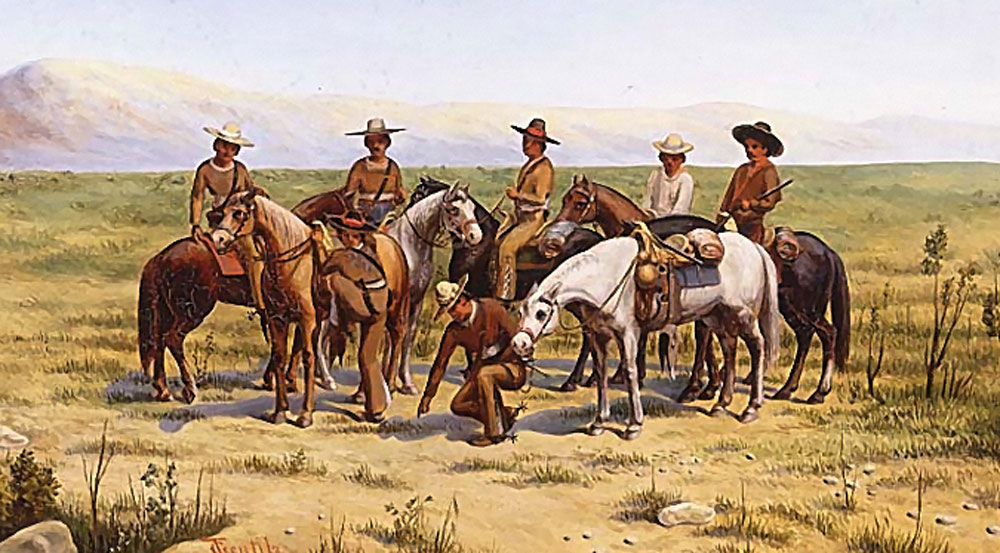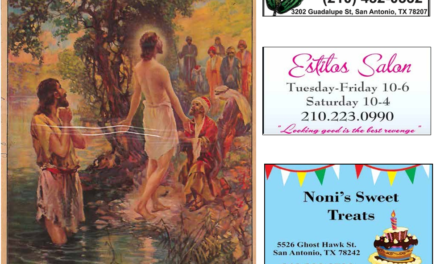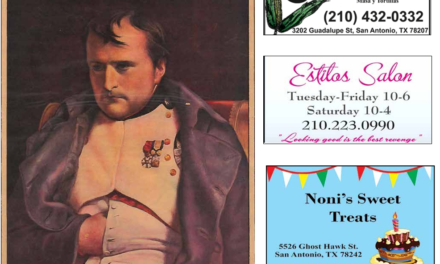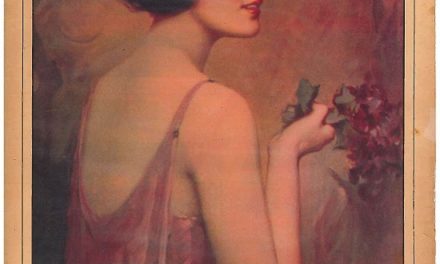In 1688 as New Spain responded to French incursions into its northern most frontier, it planned to send expeditionary forces led by capable and experienced generals that would lead veteran military units. In this era, these leaders were no longer referred to as ‘Conquistadors”, but they certainly still fulfilled the order to explore, colonize and Christianize the natives they encountered.
As an example, in 1688, General Alonzo de Leon, Governor of Coahuila, was chosen to lead the first “Entradas”, first entries, into its unexplored province “El Desbobaldo”, the uninhabited. Prior to this time there had been very little military reconnaissance of this territory. However, it was known that there were very many Native American tribes both friendly and hostile that were living in this area. Also, very little was known of the geography, topography and flora and fauna of this province.
As the general consider these challenges, he began to develop a list of the soldiers he would need for this expedition. He would have to choose men from the presidios in the neighboring northern states of Nuevo Leon and Coahuila. Most of these men were experienced soldiers as they had the most recent expeditionary and combat experiences in these newest northern provinces they were posted to. Also, these men were familiar with harsh living environments and depredations on the frontier. These men would be the best suited for the up-and coming long-term expedition into the unknown filled with harsh terrains and hostile Native Americans.
Most of these men were also second and third generation military descendants that understood regiment and disciple in order to survive in the wilderness. They also, came from ranching environments where early childhood training taught them skills to survive on the frontier. Such as, finding water, hunting wild-game and what plants and trees to harvest on the prairie. They also learned the use of weapons early on as they had hostile enemies against them. Plus, they became accomplished horseman and livestock handlers. These skills helped them sustain themselves on the harsh frontier.
The soldiers that were first chosen to be on the expedition needed to be married men with families. This was important as part of the over-all plan was to colonize the new province and these soldiers and their families would be able to populate the new “Villas”, settlements. Also, extended soldier/civilian family members would be encouraged to settle in the new “Villas”. Ultimately, these first Texas Soldiers/Settlers would be the foundation of the new society and culture that would rise from the new Texas frontier. Clearly, the military would be an important part of the paradigm of presidio/villa/mission life.
The plan for development was, once the presidio was built and the soldiers brought their families, a new ‘Villa”, town, would be started to house the arriving families of the soldiers and then the missions would be built to accommodate the Native Americans. Civilians were also encouraged to settle in these new “Villas” to provide an expanding population, economy and society. Many of the early settlers came from the neighboring provinces of Chihuahua, Coahuila and Nuevo Leon. Of these areas, it is understood that far more persons and soldiers came from Coahuila.
Also, as the Native Americans became Christianized they began to be acculturated into Tejano society. This also led to intermarriage among the Tejanos, Mestizo and Spanish members of the “Villas”. Within several generations some of the Native American identity and culture had been lost. Yet, at the missions they were able to develop “Villas” that promulgated their new identity, society and government. These new communities had their own mayor’s and councilmen.
Typically, arriving civilian settlers were given land grants to begin their new lives and to provide for their futures. Typically, Soldier/Settlers had designated areas of land that was set-aside for them. Yet, as integration and assimilation occurred lines of settlement would blur. Although military families had additional restraints and control than their civilian counterparts, they all had to observe the governments protocols for civil and religious celebrations and participation.
It is interesting to note in the records of early 1700’s city council minutes that there were annual committees appointed to organize the annual civic and religious festivities for food, refreshments, music and location of event. Celebrated authors visiting in these historical eras have written and reflected as to these celebrations, size and duration. Another unifying community factor was the practice of religion which was almost all Catholicism. Church’s had been established in the “Villas” which provided its inhabitants with a place for worship and to receive the sacraments of the faith. There were also ample and annual religious feast days to celebrate in the ‘Villa”.
Equally important for the Tejanos of the era was the practice of “Compradozgo”, Godparenting. This practice was very strong in the Tejano towns and ranching communities. The role Tejana matriarchs played in these matters was very important as they were able to determine future brides and grooms for their sons and daughters. Many times, these decisions forged strong economic circumstances and also could provide extensive land holdings. In addition, it would provide strong interpersonal family ties that would only strength their culture and society as a whole.
During the Spanish colonial period, 1690-1821, Tejano society was strengthened by many factors and further enhanced by their distance from the interior government. This resulted in a very self-reliant and independent Tejano population that relied on self- government through their own laws and order. Once again, this text helps to illustrate the basic concept of the Tejano Soldier/Settler that contributed to the founding of Texas, his background, his identity and culture that contributed to the founding of our great state of Texas! Viva Tejanos! For more information on Tejanos visit
Texas Tejano.com
First Texas Soldiers/Settlers









